“To put it simply, I love food,” says Grace Lichaa, who works full-time as chef and director at the Capital Area Food Bank. In her downtime she manages a small catering and pickling business and works weekends at a local farmers market. She has also participated in the SNAP (Supplemental Nutrition Assistance Program) Challenge, which asks people to subsist on the budget of a typical food stamp recipient, around $4 a day (Lichaa went with $25 a week).
For Food Diaries, she recorded her daily meals for both a normal weekend day and a day of the SNAP Challenge. “Working at the Capital Area Food Bank really exposes how the budget reduction will impact several of our Washington neighbors in getting meals on the table and making ends meet,” she says.
Read on to see how her two days of meals compared.
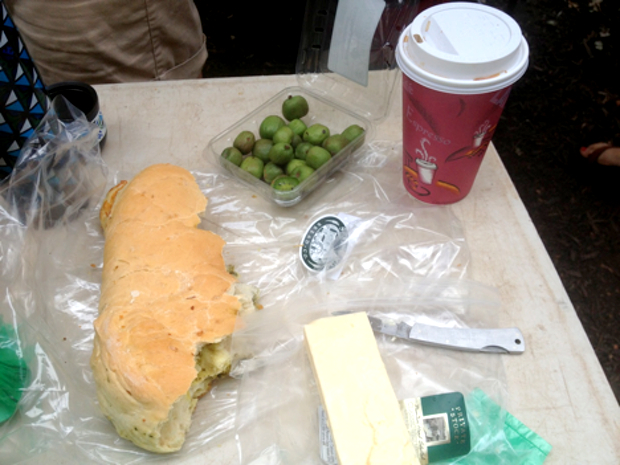
Typical breakfast: “Most weekend mornings, I can be found working at a local farmers market for New Morning Farm. I love the customers, the atmosphere, and the constant access to fresh and delicious produce. This is especially important in terms of my business. I get there at 7 AM, so there is no time to eat before I go. I grabbed a coffee on the way in and shared a block of cheese, some delicious pesto Asiago cheese bread from Spring Mill, and some local fruit. You can see the amazingly beautiful kiwi berries in the shot. Later on I had a few raspberries (not pictured).”
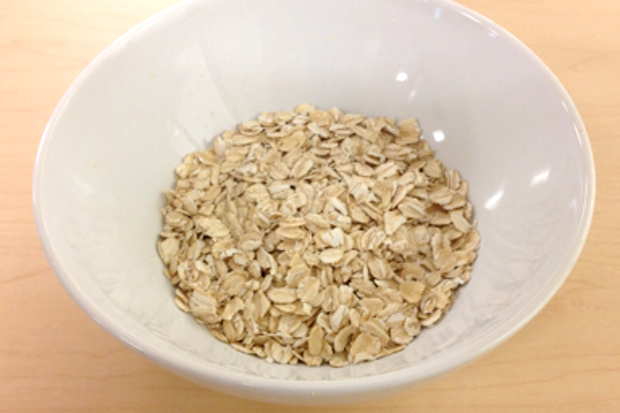
Food stamp breakfast: “I purchased oats in bulk, but unfortunately milk was too expensive, so my breakfast was rolled oats cooked in water. I try to have a hot cereal over cold cereal or other breakfasts in the morning. Oatmeal is inexpensive, filling, and isn’t half bad. It is a little plain, but I am saving up my fresh fruit allowance for dinner tonight.”
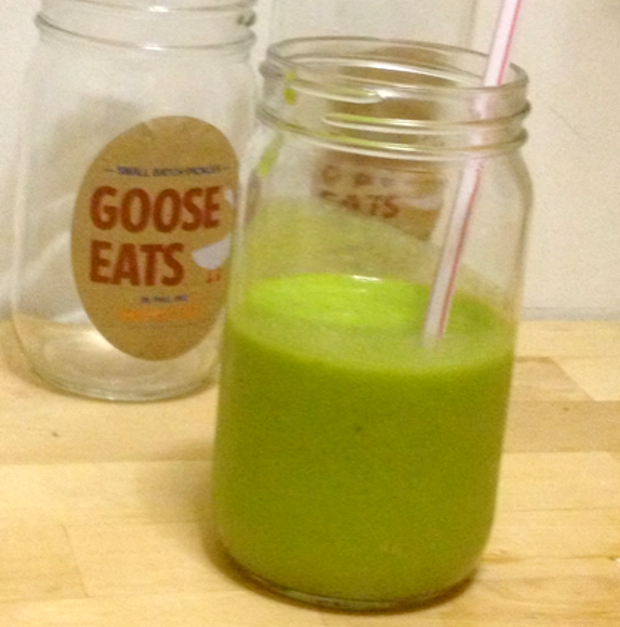
Typical lunch: “Last Saturday I went home and dropped off the extra items I got at the market and made a quick juice before I went to the kitchen space I rent. I share kitchen space with about 40 other food producers at Union Kitchen. I made a green juice with cucumbers for hydration, spinach, apple, lemon, and ginger.”
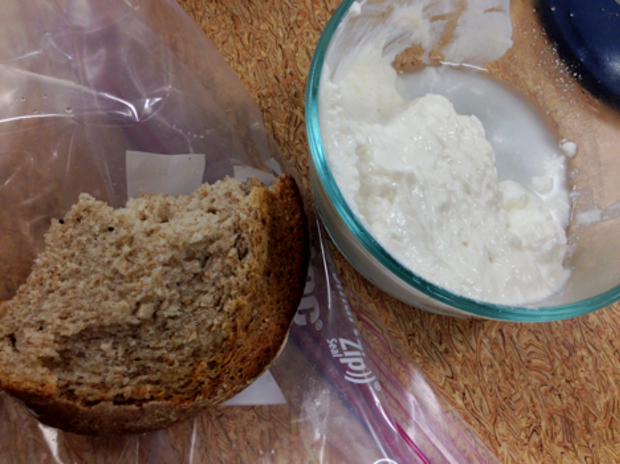
Food stamp lunch: “I was able to find low-cost bread at the grocery store on the sale rack and bring it in for lunch today—I had bread and yogurt and cottage cheese. The yogurt and cottage cheese really set me back, but they’re a relatively inexpensive vegetable protein, fairly healthy, and on sale this week.”
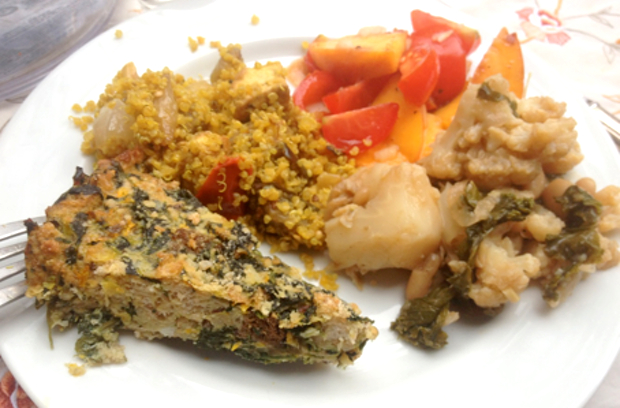
Typical dinner: “After pickling some green beans and okra, I came home in time to throw together a quick salad (tomato and peach, courtesy of Mark Bittman) to add to the meal to celebrate the holiday of Sukkot. Sukkot is a Jewish celebration where you eat meals in an outdoor structure. Pictured here are items from the potluck: a quinoa tofu dish, peach-tomato salad, cauliflower and kale salad, and spinach crumb bake.”
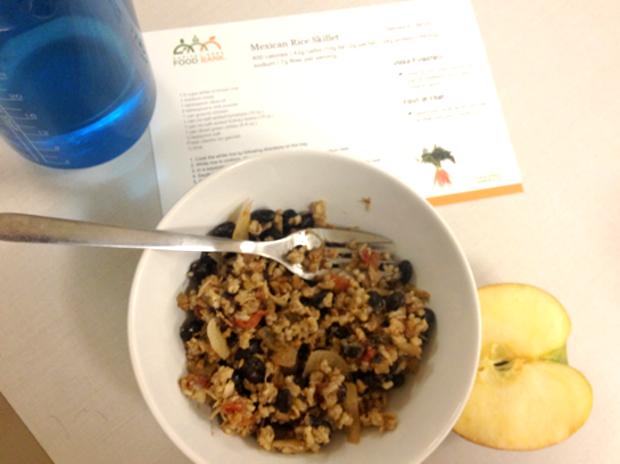
Food stamp dinner: “This was the largest meal of the day, and I employed the Capital Area Food Bank’s healthy recipes to make dinner happen. The Mexican rice skillet uses canned beans, tomatoes, and brown rice to make a complete protein. This dish makes enough for four, so I saved the leftovers and will be eating them throughout the week. This was relatively tasty, and all of the ingredients cost under $9. I was also able to add half an apple. Apples are relatively cheap, but in order to have a fresh fruit item daily, I need to cut the apple in half. The drink of choice throughout the day has been water; I drink at least 32 ounces of water to prevent me from feeling hungry.”
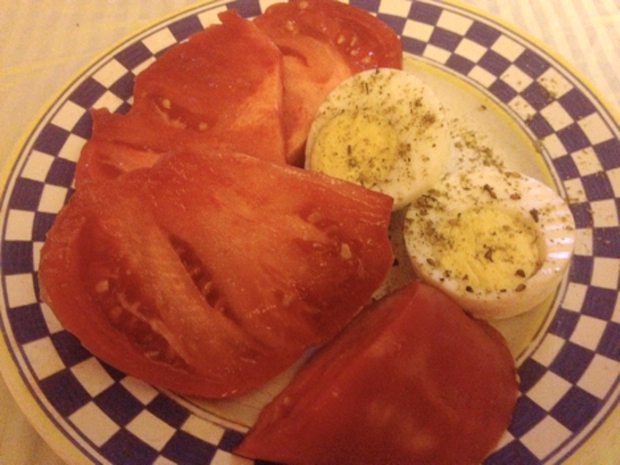
Typical snack: “I love the delicious tomatoes that are just starting to wind down in the area. This is a local Brandywine tomato and a hardboiled egg, both from New Morning Farm. The egg has za’atar and salt, and the tomato is lightly salted. I need to finish up my time in the kitchen in the evening, and this will power me through it.”
Disclaimer: The Food Diaries series is intended to be inspirational and is not an endorsement of each individual’s diet.
Are you a local health, fitness, or nutrition expert with a love for food? E-mail wellbeing@washingtonian.com to find out how you could be featured in our series.

















